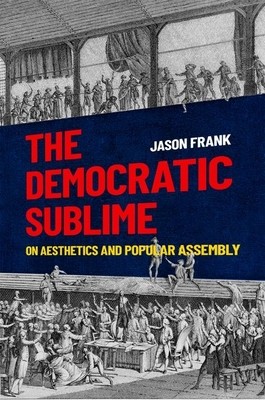
- We will send in 10–14 business days.
- Author: Jason Frank
- Publisher: Oxford University Press, USA
- ISBN-10: 0190658169
- ISBN-13: 9780190658168
- Format: 15.2 x 23.1 x 1.8 cm, softcover
- Language: English
- SAVE -10% with code: EXTRA
Reviews
Description
The transition from royal to popular sovereignty during the age of democratic revolutions--from 1776 to 1848--entailed not only the reorganization of institutions of governance and norms of political legitimacy, but also a dramatic transformation in the iconography and symbolism of political
power. The personal and external rule of the king, whose body was the physical locus of political authority, was replaced with the impersonal and immanent self-rule of the people, whose power could not be incontestably embodied. This posed representational difficulties that went beyond questions of
institutionalization and law, extending into the aesthetic realm of visualization, composition, and form. How to make the people's sovereign will tangible to popular judgment was, and is, a crucial problem of democratic political aesthetics.
Frank argues that popular assemblies allowed the people to manifest as a collective actor capable of enacting dramatic political reforms and change. Moreover, Frank asserts that popular assemblies became privileged sites of democratic representation as they claimed to support the voice of the people
while also signaling the material plenitude beyond any single representational claim. Popular assemblies continue to retain this power, in part, because they embody that which escapes representational capture: they disrupt the representational space of appearance and draw their power from the
ineffability and resistant materiality of the people's will. Engaging with a wide range of sources, from canonical political theorists (Rousseau, Burke, and Tocqueville) to the novels of Hugo, the visual culture of the barricades, and the memoirs of popular insurgents, The Democratic Sublime
demonstrates how making the people's sovereign will tangible to popular judgment became a central dilemma of modern democracy, and how it remains so today.
EXTRA 10 % discount with code: EXTRA
The promotion ends in 10d.20:25:04
The discount code is valid when purchasing from 10 €. Discounts do not stack.
- Author: Jason Frank
- Publisher: Oxford University Press, USA
- ISBN-10: 0190658169
- ISBN-13: 9780190658168
- Format: 15.2 x 23.1 x 1.8 cm, softcover
- Language: English English
The transition from royal to popular sovereignty during the age of democratic revolutions--from 1776 to 1848--entailed not only the reorganization of institutions of governance and norms of political legitimacy, but also a dramatic transformation in the iconography and symbolism of political
power. The personal and external rule of the king, whose body was the physical locus of political authority, was replaced with the impersonal and immanent self-rule of the people, whose power could not be incontestably embodied. This posed representational difficulties that went beyond questions of
institutionalization and law, extending into the aesthetic realm of visualization, composition, and form. How to make the people's sovereign will tangible to popular judgment was, and is, a crucial problem of democratic political aesthetics.
Frank argues that popular assemblies allowed the people to manifest as a collective actor capable of enacting dramatic political reforms and change. Moreover, Frank asserts that popular assemblies became privileged sites of democratic representation as they claimed to support the voice of the people
while also signaling the material plenitude beyond any single representational claim. Popular assemblies continue to retain this power, in part, because they embody that which escapes representational capture: they disrupt the representational space of appearance and draw their power from the
ineffability and resistant materiality of the people's will. Engaging with a wide range of sources, from canonical political theorists (Rousseau, Burke, and Tocqueville) to the novels of Hugo, the visual culture of the barricades, and the memoirs of popular insurgents, The Democratic Sublime
demonstrates how making the people's sovereign will tangible to popular judgment became a central dilemma of modern democracy, and how it remains so today.


Reviews